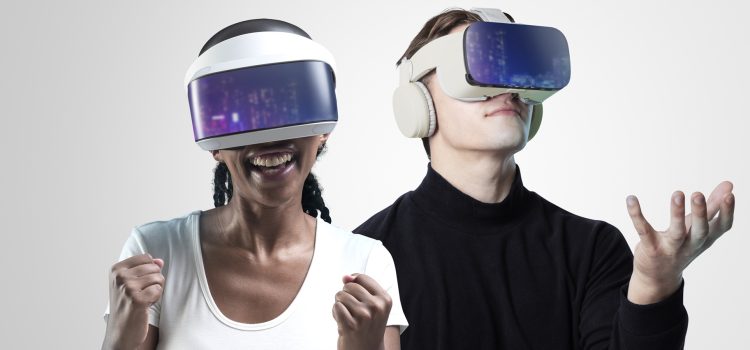
Introduction
Virtual Reality (VR) has come a long way from its nascent stages to becoming a transformative force in the world of entertainment. Initially perceived as a futuristic concept, VR has evolved into a tangible and influential technology that is reshaping how we experience various forms of entertainment. This article explores the evolution of virtual reality in entertainment, tracing its journey from early experiments to its current state and future potential.
Early Beginnings: The Conceptualization of VR

The concept of virtual reality can be traced back to the mid-20th century. Morton Heilig, often referred to as the “father of virtual reality,” developed the Sensorama in the 1960s. This mechanical device was designed to immerse the viewer in a simulated environment by combining visuals, sound, and even smell. Although rudimentary by today’s standards, the Sensorama laid the groundwork for future VR developments.
In the 1980s and 1990s, the term “virtual reality” gained popularity, thanks to the work of pioneers like Jaron Lanier, who founded VPL Research. Lanier’s company developed some of the first VR headsets and gloves, which allowed users to interact with virtual environments. Despite the excitement surrounding these early developments, the technology was still in its infancy, and practical applications in entertainment were limited.
The Rise of VR in Gaming

The gaming industry has been a significant driver of VR technology. In the early 2010s, advancements in computer graphics, motion tracking, and display technology began to converge, making VR more accessible and appealing to the gaming community. The release of the Oculus Rift development kit in 2012 marked a turning point. Created by Palmer Luckey and later acquired by Facebook, the Oculus Rift brought VR gaming to the forefront of public consciousness.
Following the Oculus Rift, other companies like HTC, Sony, and Valve entered the VR market with their own headsets, such as the HTC Vive and PlayStation VR. These devices offered more immersive and interactive gaming experiences, allowing players to step into virtual worlds and engage with them in ways that were previously unimaginable.
VR in Film and Television

Beyond gaming, VR has also made significant inroads into the film and television industry. Filmmakers and content creators have embraced VR as a new medium for storytelling. VR films and experiences offer a unique perspective, allowing viewers to become active participants in the narrative.
One of the earliest and most notable examples of VR in film is the 2016 short film “Henry,” produced by Oculus Story Studio. Directed by Ramiro Lopez Dau, “Henry” won an Emmy Award for Outstanding Original Interactive Program, showcasing the potential of VR as a storytelling medium.
Major studios and streaming platforms have also experimented with VR content. For instance, Netflix released a VR app that allows users to watch their favorite shows and movies in a virtual living room. Similarly, Disney and other studios have produced VR experiences that immerse viewers in the worlds of their beloved franchises.
VR in Live Events and Performances

Virtual reality has also revolutionized live events and performances. Concerts, theater productions, and sports events have all embraced VR to enhance the audience experience. With VR, fans can attend live events from the comfort of their homes, enjoying a front-row seat to their favorite performances.
One notable example is the VR concert by the virtual band Gorillaz. In 2017, the band hosted a VR concert that allowed fans to experience the performance from various perspectives, including on stage with the band members. This innovative use of VR demonstrated its potential to create unique and immersive live event experiences.
The Future of VR in Entertainment

As VR technology continues to evolve, its impact on entertainment is expected to grow even further. Advances in hardware, such as lighter and more comfortable headsets, improved motion tracking, and higher-resolution displays, will enhance the overall VR experience. Additionally, developments in artificial intelligence and haptic feedback will make virtual environments more realistic and interactive.
The integration of VR with other emerging technologies, such as augmented reality (AR) and mixed reality (MR), will open up new possibilities for entertainment. These technologies can create hybrid experiences that blend the virtual and physical worlds, offering audiences unprecedented levels of immersion and engagement.
Conclusion
The evolution of virtual reality in entertainment has been a remarkable journey, from early experiments to becoming a mainstream technology. VR has transformed gaming, film, television, live events, and performances, offering new ways for audiences to engage with content. As technology continues to advance, the future of VR in entertainment holds exciting possibilities, promising even more immersive and interactive experiences for audiences worldwide.
Virtual reality entertainment is no longer a distant dream; it is a reality that is here to stay, reshaping the landscape of entertainment for years to come.









